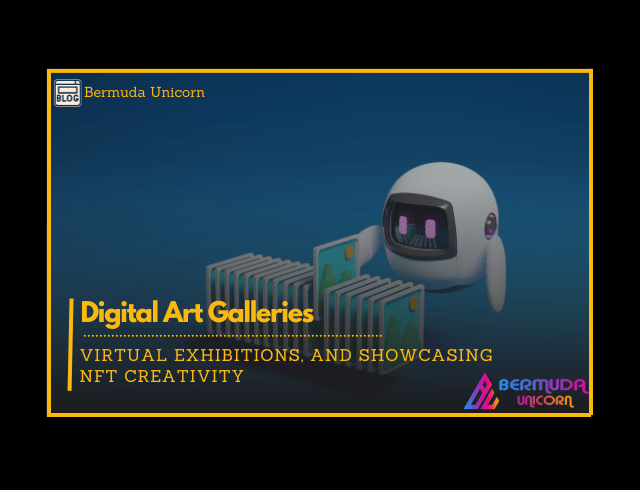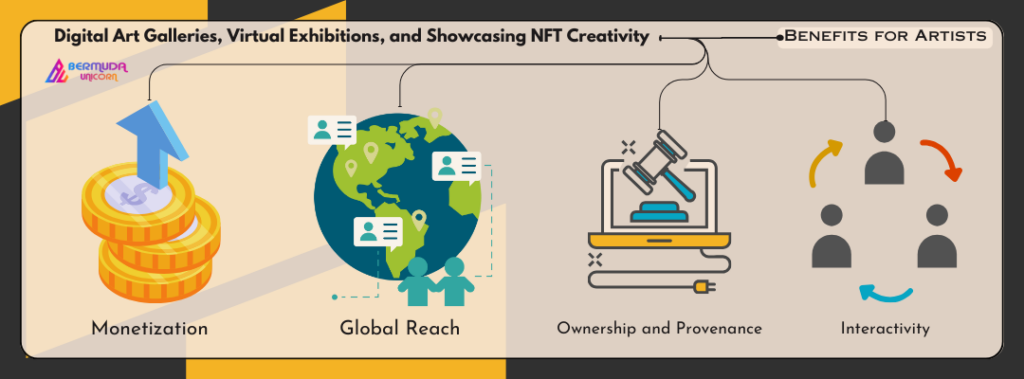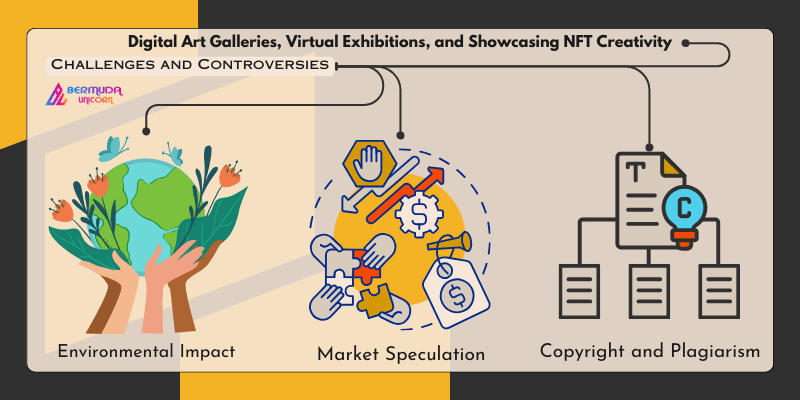

Introduction
The world of art has undergone a profound transformation in recent years, thanks to the rise of digital art galleries and virtual exhibitions. One of the most intriguing developments within this realm is the emergence of Non-Fungible Tokens (NFTs) as a means to buy, sell, and showcase digital artworks. NFTs have opened up new avenues for artists to monetize their creativity and connect with a global audience. In this blog post, we will explore the fascinating intersection of digital art galleries, virtual exhibitions, and NFTs, and how they are reshaping the art world.
The Dawn of Digital Art Galleries
Traditional art galleries have long been the go-to spaces for artists to exhibit their work. However, these physical spaces have limitations, including geographical constraints, limited capacity, and high costs. Digital art galleries, on the other hand, transcend these limitations by existing in the virtual realm. Artists can create immersive and interactive environments where viewers can explore their work from anywhere in the world. This accessibility has democratized the art world, allowing emerging artists to gain exposure on a global scale.
Virtual Exhibitions: A New Frontier
Virtual exhibitions take digital art galleries to the next level by curating and presenting art in a cohesive and engaging manner. These exhibitions often simulate the experience of walking through a physical gallery, complete with curated collections, artist statements, and even virtual opening receptions. Viewers can navigate these exhibitions from the comfort of their homes, using their computers or VR headsets. The ability to create immersive virtual spaces has led to innovative and experimental approaches to art curation.
The NFT Revolution
At the heart of the digital art gallery and virtual exhibition boom is the use of NFTs. NFTs are unique digital tokens that are used to represent ownership of a specific digital asset, such as artwork, music, or even virtual real estate. Artists can mint their creations as NFTs, which are then bought and sold on blockchain-based platforms like Ethereum. The use of NFTs has introduced a new level of authenticity and scarcity to digital art, as each NFT is one-of-a-kind and can be verified on the blockchain.
Benefits for Artists
The integration of NFTs into digital art galleries and virtual exhibitions has brought several benefits to artists:

1. Monetization:
Artists can sell their digital creations as NFTs, allowing them to earn a percentage of each subsequent sale. This provides a source of ongoing income that traditional art sales do not offer.
2. Global Reach:
Virtual exhibitions and NFT marketplaces have a global audience, enabling artists to connect with collectors and fans from around the world.
3. Ownership and Provenance:
NFTs provide a transparent and immutable record of ownership and provenance. This eliminates concerns about art forgery and ensures that artists receive proper credit and compensation for their work.
4. Interactivity:
Artists can create interactive and dynamic artworks that evolve over time, offering viewers a unique and engaging experience.
Challenges and Controversies
While the digital art, virtual exhibition, and NFT ecosystem offer exciting opportunities, it also faces challenges and controversies. Some of the key concerns include:
1. Environmental Impact:
The energy consumption of blockchain networks, particularly Ethereum, has raised concerns about their environmental impact. Artists and platforms are exploring more eco-friendly solutions.

2. Market Speculation:
The NFT market has seen speculation and price volatility, with some works selling for exorbitant sums. Critics argue that this speculative frenzy detracts from the true value of art.
3. Copyright and Plagiarism:
NFTs have raised questions about copyright infringement and plagiarism, as some artists have claimed that their work was minted as NFTs without their permission.
Conclusion
Digital art galleries, virtual exhibitions, and NFTs are transforming the art world by making it more accessible, interactive, and financially rewarding for artists. While challenges and controversies exist, the potential for innovation and creativity in this space is undeniable. As technology continues to evolve, we can expect even more exciting developments that redefine how we create, experience, and value art. The NFT revolution has only just begun, and its impact on the art world is likely to be profound and enduring.
Frequently Asked Questions:
1. What is a digital art gallery, and how does it differ from a traditional art gallery?
A digital art gallery is an online platform where artists display digital artworks. It’s different from traditional galleries as it’s accessible globally via the internet and offers interactive experiences.
2. What are NFTs, and how do they work in the context of art?
NFTs are unique digital tokens representing ownership of digital assets like art. Artists create NFTs of their work, and these tokens are bought and sold on blockchain platforms, offering proof of authenticity and providing artists with royalties on resales.
3. How do virtual exhibitions work, and why are they advantageous?
Virtual exhibitions are curated online art collections that simulate the gallery experience. Viewers explore them online, offering global accessibility, interactivity, and artist context, and eliminating the need for physical presence.
4. What are the challenges and controversies surrounding NFTs and digital art?
Challenges include environmental concerns due to blockchain energy use, market speculation driving high prices, copyright issues with unauthorized NFT minting, and concerns about inclusivity and accessibility in the digital art space.